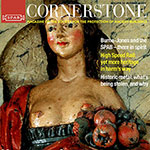Church Monument Handbook
We have prepared this short guide for those charged with caring for ancient stone monuments and hope that it may be found useful. It is a distillation of the experience gained by Minerva Stone Conservation over many years of undertaking monument repair and conservation along with study and anecdotal observation. The information contained herein is not exhaustive.
Church monuments can vary from a simple commemorative plaque to a large and elaborate canopied tomb holding the relics of a saint or of royalty . Interred in the churchyard of All Saints Church, Fulham, are the mortal remains of many historical ‘high rollers’, among them Henry VIII’s doctor, one Lord Mayor of London and eight Bishops of London. Relatively humble monuments, however, may commemorate or contain the remains of giants. Below one of the simplest tomb chests lie the remains of Granville Sharp (1735-1813), the father of the slavery abolitionist movement (see case studies).
The production of monuments in the middle ages was of major economic importance. Wealthier areas of the country would have had a flourishing body of skilled craftsmen as well as money to spend on the fabrication of monuments. The wool trade, the fluctuating fortunes of estates and power, industrialisation, foreign trade and the relative importance of religion all are reflected in the changing monuments of death. Beside showing art historical, technical and craft development, tombs and memorials can also provide a tiny chronological history of areas as varied as armour, fashion and hairstyles, language, poetry and education.
